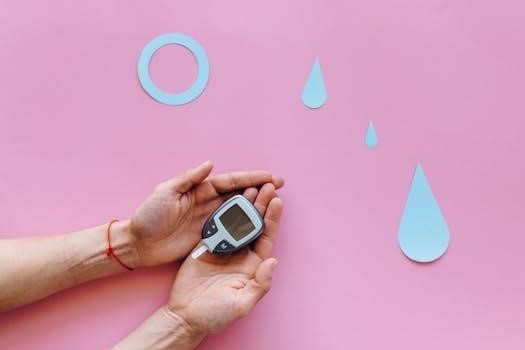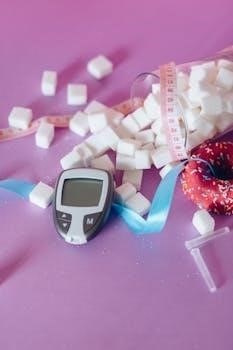The B Positive blood type diet is a unique dietary plan tailored for individuals with this specific blood type. It focuses on consuming foods that are thought to be compatible with B positive blood and avoiding those deemed less suitable, aiming for improved health and well-being.
Understanding the B Positive Blood Type
The B positive blood type is characterized by the presence of the B antigen on red blood cells, along with the Rh factor. This specific combination is believed by some to influence how individuals metabolize different food types. According to proponents, B positives are thought to have descended from nomadic ancestors, which may suggest a more flexible and varied dietary needs compared to other blood types. This theory suggests that understanding this aspect of your blood type can guide dietary choices for optimal health. It is important to note that the scientific community has not fully endorsed these theories.

Key Food Categories for B Positive Diet
The B Positive diet emphasizes a balanced intake of lean proteins, diverse fruits and vegetables, and specific grains and legumes. These categories form the core of the recommended food choices.
Beneficial Lean Proteins
For individuals with B positive blood type, incorporating lean protein sources is crucial. Recommended options include lamb, goat, and venison, which are considered highly beneficial. Other good choices are fish, turkey, and tofu, providing essential nutrients and supporting a healthy metabolism. These protein sources are believed to be well-suited for the B positive digestive system, aiding in overall health and energy levels. Lean proteins help build and maintain muscle mass, contributing to a balanced diet.
Recommended Vegetables and Fruits
A variety of vegetables are encouraged in the B positive diet, especially cruciferous options like broccoli and kale. Green vegetables, in general, are considered beneficial, providing essential vitamins and minerals. Fruits should include options such as bananas, oranges, and mangos, though some sources suggest moderation. Other fruits that may be suitable include lemons. It’s important to include a wide range of colors and types to ensure a diverse nutrient intake, supporting overall health and well-being for individuals with B positive blood type.
Grains and Legumes in the B Positive Diet
The B positive diet includes a variety of grains, with millet and sorghum being noted as beneficial choices. These grains can provide essential carbohydrates and fiber. When it comes to legumes, the focus is on options like lima beans, which are considered suitable for this blood type. However, some legumes, such as lentils, may be advised against. A balanced approach is crucial, incorporating a variety of compatible grains and legumes while avoiding those that are less suitable, according to the blood type diet principles.

Foods to Avoid on the B Positive Diet
The B positive diet restricts certain foods, including corn, buckwheat, and sesame seeds, which are believed to contribute to weight gain. It’s essential to limit these less compatible foods.
Harmful Meats and Seafood
Individuals with B positive blood type are advised to be cautious with certain meats and seafood. Specifically, the diet suggests avoiding chicken, rabbit, and liver, as these are considered less beneficial for this blood type. Some sources also recommend limiting or avoiding other organ meats. The emphasis is on choosing lean proteins that are more compatible with the digestive system of those with B positive blood. This approach aims to optimize digestion and overall health by selecting the right types of meat and seafood.
Restricted Grains, Legumes, and Nuts
The B positive blood type diet recommends limiting certain grains, legumes, and nuts. Specifically, corn, buckwheat, and lentils are often cited as foods to avoid due to their potential to cause weight gain or digestive issues in individuals with this blood type. Peanuts and sesame seeds are also on the restricted list. This guidance emphasizes the importance of selecting grains, legumes, and nuts that are more compatible with the B positive digestive system, aiming to optimize health and metabolic function. Careful consideration of these food groups is crucial.
Fruits and Vegetables to Limit
For individuals following the B positive blood type diet, there are certain fruits and vegetables that are advised to be consumed in moderation or avoided. These include bananas, oranges, mangos, guavas, and coconuts, which are thought to be less beneficial for this blood type. Tomatoes are also among the vegetables to limit. The rationale behind these restrictions is that these particular produce items may not be processed as effectively by those with B positive blood, potentially causing digestive or metabolic issues. It is important to pay attention to these recommendations.

Health Benefits of Following the B Positive Diet
Adhering to the B positive blood type diet may lead to improved digestion and increased energy levels. It may also assist with weight management, promoting overall health and well-being.
Improved Digestion and Energy Levels
Following the B positive diet, which emphasizes compatible foods, may lead to improved digestion. This is because the diet aims to eliminate foods that could cause digestive issues for those with this blood type. By focusing on easily digestible options, individuals may experience less bloating and discomfort. Consequently, the body can utilize nutrients more effectively, leading to a noticeable increase in energy levels throughout the day. This enhanced digestive process can also promote a more balanced and efficient metabolism, further contributing to overall vitality and well-being. The diet’s focus on compatible foods is key to unlocking these benefits.
Potential for Weight Management
The B positive blood type diet may offer potential benefits for weight management by focusing on foods that are believed to be metabolized efficiently by individuals with this blood type. By avoiding foods that are thought to cause weight gain or digestive issues, individuals may find it easier to maintain a healthy weight. This dietary approach aims to create a balanced eating pattern that supports optimal metabolism and reduces the likelihood of storing excess fat. The emphasis on lean proteins, vegetables, and suitable grains, while limiting certain other foods, can contribute to a more sustainable approach to weight control.

Additional Considerations for the B Positive Diet
Beyond food choices, exercise and stress management play crucial roles in maximizing the benefits of the B positive diet. Integrating these lifestyle factors can enhance overall health and well-being.
Exercise Recommendations
For individuals following the B positive diet, incorporating regular, moderate exercise is highly beneficial. Activities like walking, yoga, and Tai-chi are particularly suitable. These forms of exercise are gentle on the body, promoting overall well-being without causing excessive stress. The focus should be on consistent, light to moderate physical activity rather than intense workouts. This approach helps in maintaining a healthy weight, boosting energy levels, and supporting the digestive system, which aligns with the goals of the B positive diet. Regular movement also helps in stress management, which is crucial for overall health.
Stress Management and Lifestyle Factors
Managing stress is crucial for individuals adhering to the B positive blood type diet. High stress levels can negatively impact digestion and overall health, counteracting the benefits of the diet. Incorporating stress-reducing practices such as regular meditation, mindfulness, or spending time in nature is recommended. Adequate sleep and maintaining a balanced lifestyle are equally important. These lifestyle factors, alongside a diet suited for B positive individuals, contribute to better energy levels, improved digestion, and overall well-being. Creating a supportive and calm environment also aids in achieving the diet’s full potential.
Resources for B Positive Diet Information
To assist with the B positive diet, resources such as PDF food lists and charts are available. These guides help individuals make informed food choices and can be found online.
PDF Food Lists and Charts
Comprehensive PDF documents offering food lists and charts are valuable tools for individuals following the B Positive blood type diet. These resources typically categorize foods into beneficial, neutral, and harmful categories, making it easier to navigate dietary choices. The charts often include visual aids for quick reference, allowing users to identify suitable foods at a glance. These downloadable guides provide a convenient way to keep track of recommended and restricted items when planning meals or grocery shopping. They often include detailed information for meats, vegetables, fruits, grains, and other food groups, promoting adherence to the diet’s guidelines.
Where to Seek Further Guidance
For those seeking more in-depth understanding of the B Positive blood type diet, consulting with healthcare professionals is highly recommended. Naturopathic doctors, dietitians, and nutritionists can provide personalized advice based on individual health needs and goals. Online resources, such as websites and forums dedicated to the blood type diet, can offer additional information and support. Books written by experts in the field, like Dr. Peter D’Adamo, also provide comprehensive guidance. Additionally, local health clinics and wellness centers might offer workshops or consultations related to the blood type diet, providing a face-to-face learning opportunity.